5 Most Unusual Graves in Père Lachaise
The Père Lachaise cemetery is an open-air museum filled with symbolism and some of the most unexpected memorials in Paris. While visitors often flock to see the graves of Jim Morrison, Oscar Wilde, or Edith Piaf, some of the lesser-known tombs are even more intriguing.
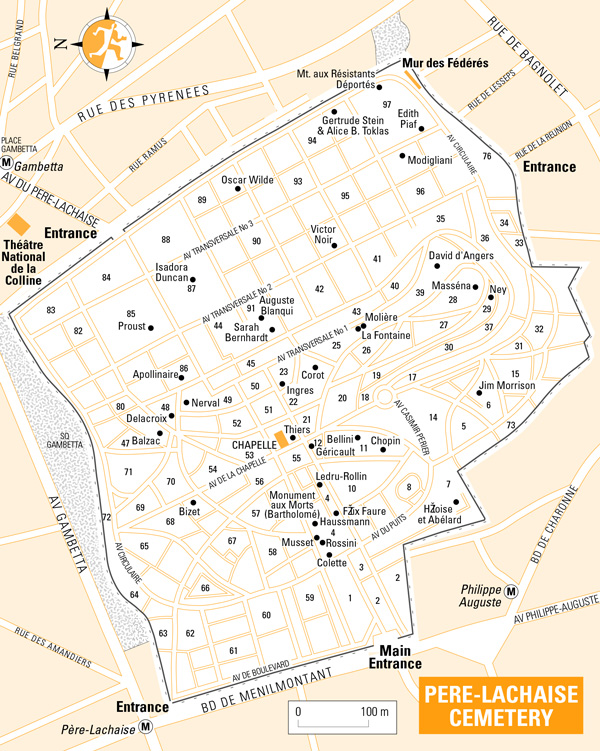
Here are some of the strangest, most creative, or downright eerie graves hidden among the winding paths of this famous cemetery.
1. The Man Who Refused to Lie Down
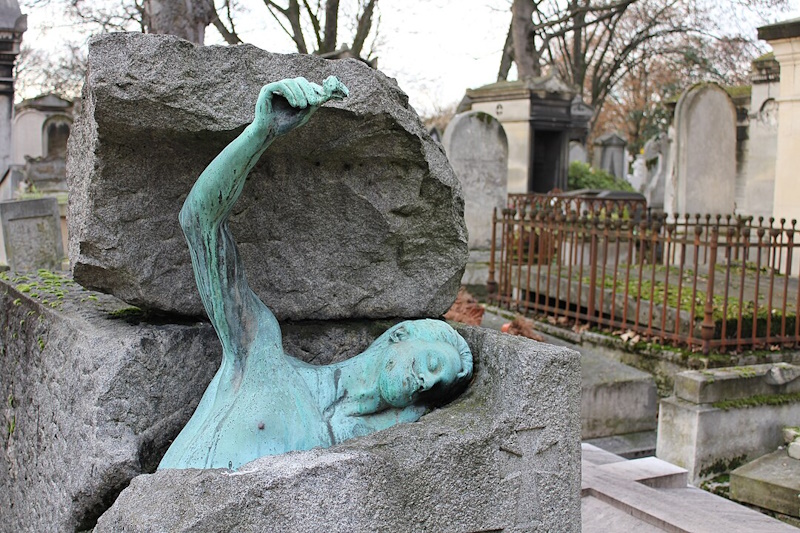
Most tombs are just slabs of stone. Not Georges Rodenbach’s. The Belgian writer, known for his novel Bruges-la-Morte, wanted something more dramatic. His grave features a life-sized bronze sculpture of him emerging from the tomb, clutching a bouquet of roses. It’s as if he’s rising from the dead, refusing to be forgotten.
A Symbolist writer obsessed with themes of memory and decay, Rodenbach ensured his own grave became a haunting work of art.
2. The Aviator’s Monument
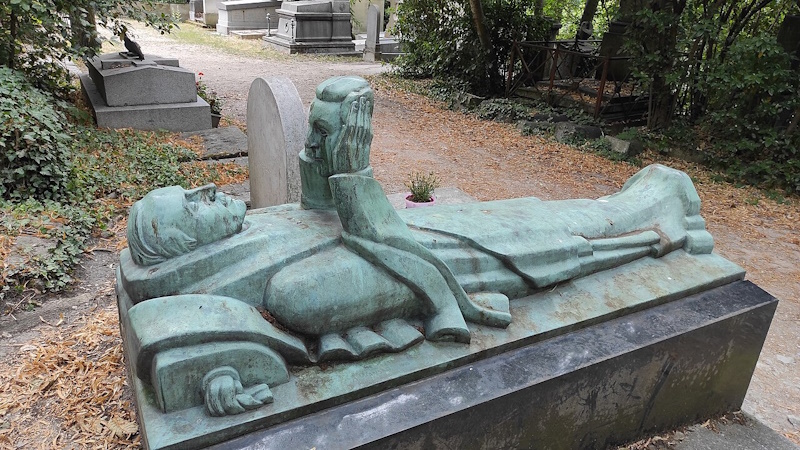
Fernand Arbelot wanted one thing in death: to keep looking at his wife’s face. His tomb in Père Lachaise is impossible to miss. A bronze statue of a man lies flat, holding a mask in his hands. The mask, legend says, is a cast of his wife’s face, so he could gaze at her for eternity. Over time, the sculpture has aged, its details softened by weather, but the image of a man clinging to love beyond the grave remains unforgettable.
3. The Kiss of Death

Victor Noir was a journalist and writer who lived in the 19th century and became famous for the way he died and the political consequences of his death.
In January 1870, he became involved in a duel with Pierre Bonaparte (Napoleon’s nephew) due to a political dispute between them, in which Victor Noir lost his life.
But he is also well known for something else: his success with women, supposedly due to the large size of his member.
After his death, the sculptor Jules Dalou created a statue of Noir lying on his back, with a prominent bulge under his trousers. Over time, this feature turned the statue into a symbol of eroticism and fertility.
Hundreds of women visited the site to leave a flower on his hat, kiss his lips, and touch his bulge, as a belief spread that doing so would boost fertility, lead to a great sex life, or help them find a husband within a year. Some women even climbed onto the statue and rubbed their genitals against the bronze bulge.
In 2004, a fence was installed to prevent people from touching the statue. If you look at the photo, you’ll see the fly of the statue is noticeably worn.
It’s an impressive sculpture and a faithful representation of how the journalist looked at the exact moment of his death. To this day, Noir is still adored by women from around the world. He is immortal.
4. The Painter Who Took His Masterpiece to the Grave
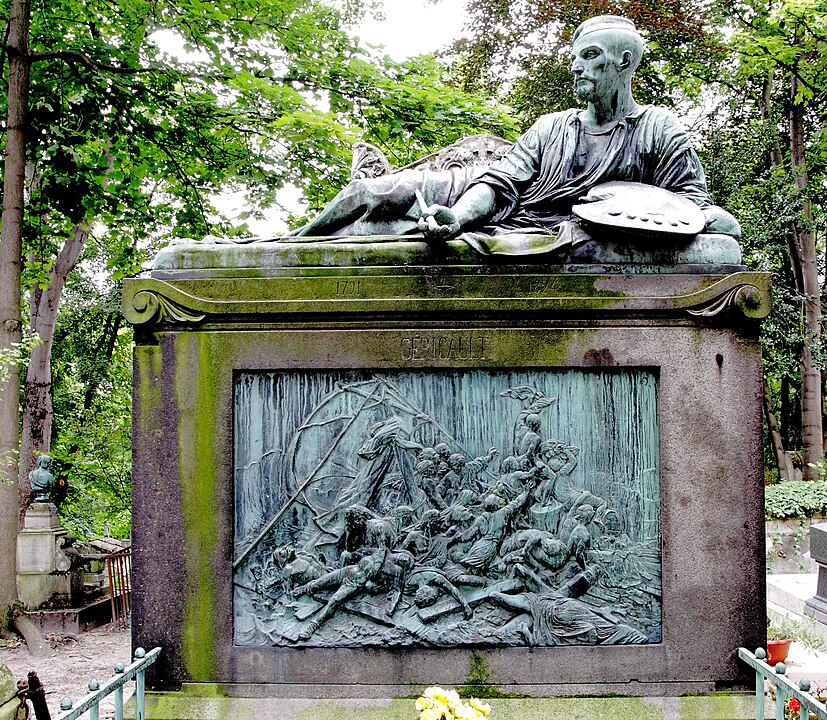
Théodore Géricault not only left behind a legacy, he took it with him. His tomb in Père Lachaise features a sculpture of the artist reclining on top, palette in hand, as if he’s still at work. Below, a relief of The Raft of the Medusa, his most famous painting, stares back at visitors. Géricault had poured years of research into the real-life shipwreck tragedy, even studying cadavers to capture its raw desperation.
5. The Man Who Took a Violin to the Grave
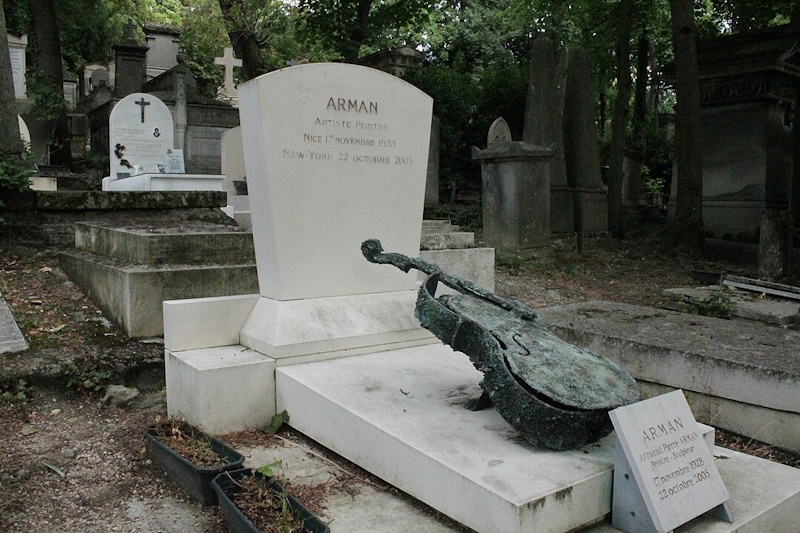
Arman, a French-American artist known for slicing, smashing, and assembling everyday objects into art, left one final masterpiece in Père Lachaise. Arman spent his career deconstructing objects to give them new meaning. His tomb features a broken bronze violin, a nod to his famous “destruction” pieces, where he cut instruments into fragments and reassembled them. The violin lies shattered in front of his grave, as if mid-explosion, frozen in time.
A Few Additional Cool Graves
Photo 4: Georges Méliès, the pioneer of cinematic special effects, rests under a granite tomb shaped like a closed book—his final story carved in stone.
Photo 5: Philosopher Auguste Comte lies beneath a dolmen-like structure engraved with his motto: “To be born, to die, to be reborn again, and to keep progressing endlessly.”
Photo 6: Félix Guattari, co-author of Anti-Oedipus, is buried next to his brother Jean. Their grave features a minimalist stone door—no path, no frame—just the idea of passage.
Photo 7: Michel Legrand, the Oscar-winning composer behind The Umbrellas of Cherbourg, is honored with a sweeping metal sculpture that moves like music frozen in mid-air.
